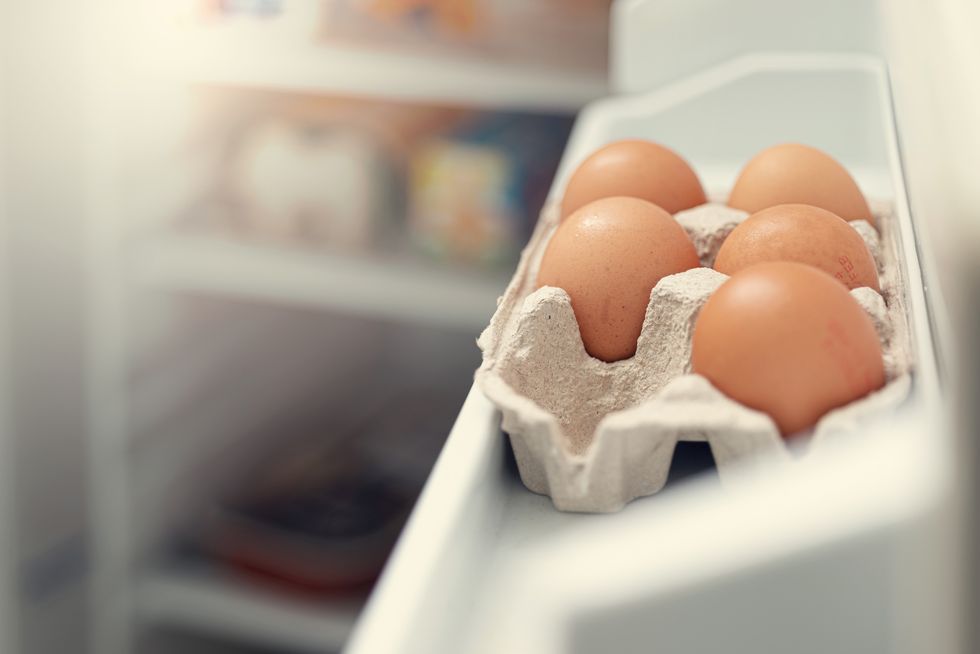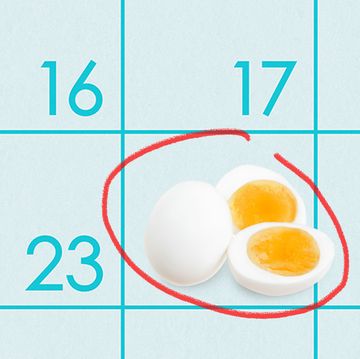It’s a nightmare scenario: A hurricane hits (or another natural disaster happens) and now you're dealing with a power outage. The power went out for 6 hours and your refrigerator is full of food. Welp, gotta dump everything in the trash, right? Not so fast. We have trusted food safety tips so you know what you can keep, what food should be safe to eat, and what you definitely need to ditch from your fridge and freezer.
The Refrigerator
How long will food be OK in the fridge without power?
If the doors stay closed, the CDC says the food in the fridge will be okay to eat for up to four hours. Try to open the refrigerator as little as possible. This will keep the temperature inside colder for longer. If you don’t have one, now is the time to buy an appliance thermometer to make sure your refrigerator is at a safe temperature (ideally before you experience a power outage); between 35 and 38°F is optimal. Even the best refrigerator models could use a second opinion.
What foods are safe to eat after four hours?
If the power is out beyond four hours, you can still eat the food in the fridge for up to another two hours — provided the internal refrigerator temp is in the safe zone (35 to 38°F). After that, you risk getting sick. Ask yourself, “If I brought this food to a BBQ and it sat out all day, would I still eat it?” If you’re still unsure, scroll down for our handy guide on what to toss vs. what to keep.
Foods to toss
- Meat, Poultry, and Seafood: including foods that are cooked (deli meats, hot dogs), uncooked and any dish containing these items, such as stews, casseroles, salads and pasta
- Dairy: any milk-based product, such as yogurt, sour cream, heavy cream, cream cheese, ricotta and foods containing these products, such as cheesecake, cannoli and baby formula if opened
- Alt Milks: any kind, such as oat, almond, soy, coconut, etc.
- Eggs: including raw, cooked and any foods made with eggs, such as frittatas, custards and lemon curd
- Cheese: any soft cheese, either in block or shredded form
- Tofu and plant-based meat substitutes
- Fruit and vegetables: any produce that’s already cut up or cooked, pre-washed raw greens, fresh juices
- Doughs: including pizza dough, cookie dough, refrigerator rolls and biscuits
- Condiments: mayonnaise, creamy dressings, tomato sauce, oyster sauce, if left above 50°F for eight or more hours
Foods to keep
- Dairy: butter, margarine
- Cheese: hard cheeses, like Swiss, Parmesan or pecorino romano, either in blocks, sliced or grated
- Fruit and vegetables: including herbs; raw and whole, canned or dried fruits
- Baked goods: bread, rolls, bagels, muffins, quick breads, tortillas and cakes
- Condiments: ketchup, mustard, hot sauce, jam, jelly, nut butters, vinegar-based dressings, pickles and olives
Is there a food that didn’t make our list? Do not attempt your own taste test — when in doubt, throw it out! No food is worth salvaging for a bout of food poisoning.
The Freezer
During a power outage, frozen food will last longer than refrigerated foods. Count on up to 48 hours for a full freezer and 24 hours for one that’s half-full, provided you keep the door closed. Just like bodies preserving warmth when they huddle up, frozen foods grouped together will help maintain the ideal temperature — for freezers, that’s 0°F. If frozen food has thawed slightly, it is safe to refreeze, according to the USDA. That said, the quality of the food will diminish.














